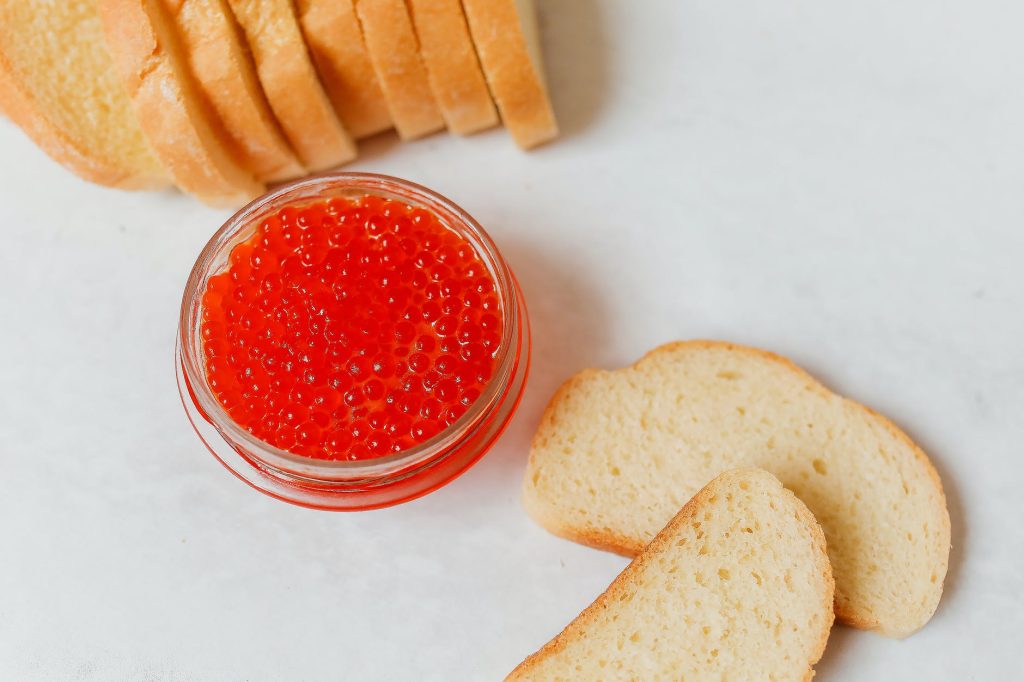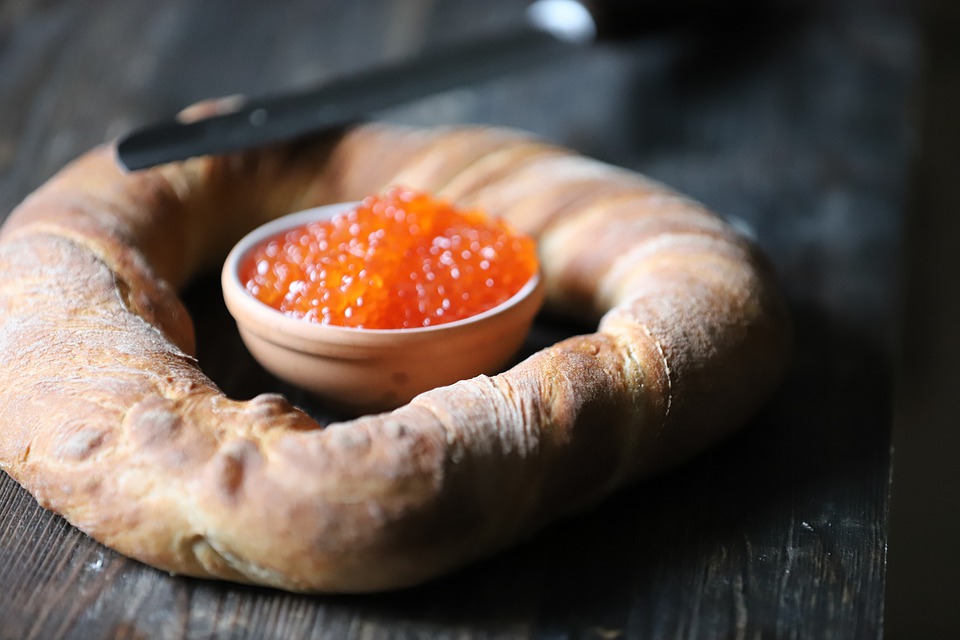Folks at Bellagio buffet (and nearly all other restaurants) stopped serving caviar sourced from Beluga sturgeon eight years ago when environmentalists raised concerns over excessive fishing. Now, most of the commercially available caviar is from farmed sturgeon. The biggest exporters of caviar are from China, Belarus, and Germany.
The Buffet at Bellagio serves caviar during Fridays and Saturdays. Call your local Bellagio for more information.
If you’re buying caviar for the first time, make sure you read up on information on the qualities of good caviar. Here are a few things you need to know about caviar.
1. Higher prices don’t equate to better products.

This holds true for every existing product out there, whether it’s food or not. A blind test conducted on caviar experts revealed that their palates had a “bias” for the less expensive varieties.
What does this mean for you? If you have cash to spend, always try to look for caviar products in the middle price range. Most sellers would put a premium on packaging (and rightfully so – caviar is a rare treat, literally) but sometimes they take it too far and price it disproportionately.
If there are cheaper prices elsewhere, it’s always the better choice.
2. Good caviar is not boring.
We hear so much about caviar we wonder what it really tastes like. For people who haven’t tried it yet, don’t rely on one source. We always read information online about good caviar having a very specific taste, but in reality, good caviar is a combination of tastes.
Caviar enthusiasts and experts know that a tin comes from a good batch if the eggs have different flavors. Professionals who work at caviar farms take note of the individual sizes of the eggs – the roe should be uniform in size and color.
But not all products are perfect (that’s what QA is for), and these subtle differences in roe size and color is the basis for grading caviar.
When sampling caviar, you should be able to taste minor differences. Some eggs will be saltier by some amount, and this is a good indication that the roe comes from a healthy fish. A sturgeon is a demersal fish, meaning it feeds on the seabed, where different concentrations of minerals influence the taste of the roe. Farmed sturgeon may have less of this variance in the roe, but it should be present nonetheless.
3. Never ever buy black market caviar.
This one should be obvious. Sturgeon numbers are dwindling, and caviar sourced from wild farming does not help the fish increase in population. Always buy from markets that source their caviar from environmentally-compliant farms.
While it may be attractive for some to spend less to be able to taste caviar, cheaper caviar isn’t guaranteed to taste better. It’s the same logic with more expensive caviar – until you have half a spoonful of roe in your mouth, you’ll never know if it’s the right purchase.
4. Sample what you intend to buy.
Because consumer rights. And more than that.
Caviar is a perishable product, and the shelf life of a tin of roe is at best, a few weeks, and not more than a month. Roe is placed as is inside tins, and once it’s exposed to air, the quality changes – from appearance to taste.
And it’s not only the air that affects the quality of roe. Even the containers themselves have an immediate effect. Caviar is naturally salty, and most salts react with metals. Try to ask if the containers are made of non-reactive metals, or at least customized for caviar.
You’d never know if the roe is good until you have a sample, so insist on a taste test. Using the tips we provided above, try to identify from the sample if there’s variety in the eggs. Your eyes also are a good judge on whether the caviar is still good – great roe looks clear, shiny (almost sparkly), and is consistent in color.
What do you think of this guide? If you have other caviar-buying tips and tricks we haven’t listed here, let us know in the comment section! Check out our other food guides on this site.
